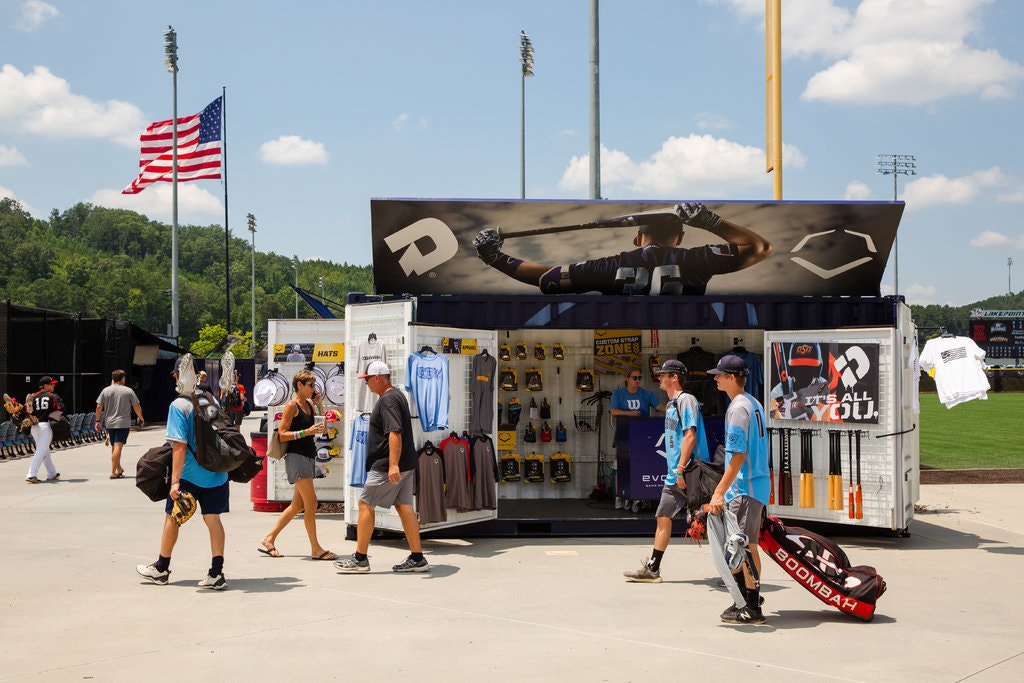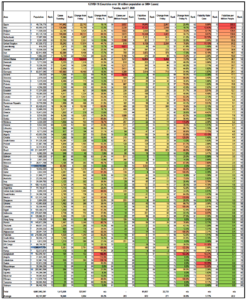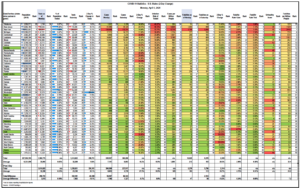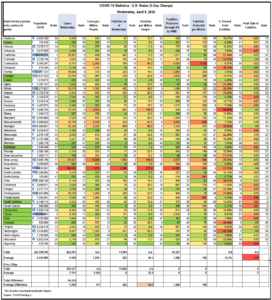We at HSP are following the news closely and keeping up with the potential impacts the COVID-19 pandemic will have on various tourism industries. This week, we are focusing on the sports tourism industry. We found the following article published in The New York Times particularly insightful:
Youth Sports Worry About Weathering Pandemic, and Future Play
Will parents and children be eager to return to team sports once the threat of the coronavirus outbreak has passed?
Written by Joe Drape
Published April 20, 2020
It was supposed to be a profitable spring for Trilogy Lacrosse. Its spring break training camps held in Arizona and Nevada for high school teams were sold out. So was its youth tournament at MetLife Stadium in New Jersey, scheduled for the last Sunday in March. The company, founded by a band of former college all-Americans, hoped to celebrate its 15th year in operation in style this month.
After all, Trilogy had expanded its Mid-Atlantic footprint to the South and the Midwest, with dozens of camps and tournaments hosting more than 15,000 lacrosse players annually.
Then came the coronavirus pandemic. In a flood of emails and cellphone calls over the first week of March, coaches and parents for more than 30 teams told the company that they would not travel to the Arizona or Nevada camps, prompting their cancellations. Not long after, Trilogy’s MetLife tournament was called off.
“It was a flashbulb moment,” said Ryan Boyle, a co-founder of the company. “We went from a full spring and gearing up for our prime summer season to being at a full stop and trying to figure out what is a moving target.”
Like the hospitality industry, youth sports is a leisure industry reliant on bringing children and their families together on fields and in gyms. The summer, of course, is its big money season because family vacations can be planned around travel team tournaments — in cities like Chicago or in sports megacomplexes, like LakePoint Sports in Emerson, Ga., that have flourished across the United States — catering to and cashing in on the estimated 45 million children that play in youth leagues and on club teams.
Before the spread of Covid-19, youth sports generated more than $15 billion annually and created the “tourna-cation circuit,” as it is known, by becoming like a cruise ship for sporting families with all-inclusive offerings. Now, however, there has been an enormous reckoning, one that has evaporated tens of millions of dollars and is getting worse daily as events and camps are canceled into the summer.
The damage is likely to be brutal and long-lasting.
More than 113 youth sports organizations signed a letter asking Congress to create an $8.5 billion recovery fund to help the industry recoup anticipated financial losses from camp and event cancellations.
“The youth sports sector plays a critical role in our economy and the development of our youth but has faced particularly severe consequences as a result of the coronavirus and resulting national emergency,” said the letter signed by several U.S. sports federations, including those for football, lacrosse, soccer, volleyball and wrestling.
“I can tell you the impact is devastating,” Dave DuPont, the chief executive of TeamSnap, said on a recent webinar organized by the Aspen Institute’s Project Play.
TeamSnap provides software used by nearly 23 million people to coordinate teams, leagues and schedules, mostly in youth sports. Last month, however, the company furloughed half of its 160 employees after it saw an 80 percent drop in the usage of its app.
“These organizations depend to a significant extent on participation fees,” DuPont said. “When activity drops to almost zero, they’re not seeing money coming in, and they’re canceling seasons. At this point, many organizations are just trying to survive.”
The most optimistic projections for a return of youth sports, organizers say, are by late August. But pinpointing when youth sports might return is perhaps less important than in what form, in an era of social distancing and with lasting pain in the American economy, which has included a spike in unemployment claims.
In the wake of the 2008 financial crisis, regular participation of 6- to 12-year-olds in team sports fell from 45 percent to 38 percent in 2014, where it has remained, according to an Aspen Institute study.
Also in 2014, a study published by Utah State University found that American families spent an average of $2,292 each year on youth sports. But it also found many households that spent as much as 10.5 percent of their gross income annually — sometimes $20,000 or more — on costs like personal trainers, travel and private teams for their children.
When games do return, many parents will struggle with spending thousands of dollars on sports — if they even have spare funds to spend.
“First, there is not going to be that kind of discretionary income out there,” said Dave Brown, who owns Basketball Stars of New York, which fields teams and camps for about 5,000 children. “And then, do you think private schools are going to rent me a gym to hold a camp for 60 kids in this environment?”
Indeed, until perhaps a vaccine is developed, some parents are going to reconsider letting their children play sports where proximity and contact are unavoidable. This perhaps presents an opening for individual sports like swimming and diving, golf and tennis, where athletes can be farther apart from one another.
Still, for youth sports operators, success is predicated on planning — venues need to be booked, coaches and officials hired, participant fees set and collected. When the lights go off in buildings, however, that structure and profits disappear. Next comes a feeling of helplessness.
Jerry Ford, the president of Perfect Game, said he has postponed “hundreds” of baseball tournaments and showcases. The company, an amateur baseball and softball scouting behemoth, hosts more than 1,000 events annually, the bulk of them over the summer months. With 100 full-time employees and thousands of part-time employees in flux, Ford said all he can do is wait and hope.
“It’s a mess — devastating,” said Ford, who founded the company in Cedar Rapids, Iowa. “There are going to be certain people not traveling anywhere this year and some that would be traveling right now if you’d let them. All we can do is be ready to go when this thing lifts.”
With a summer lacrosse season looking increasingly impossible to conduct, Boyle and his nine other full-time employees are trying to stay busy, amused and on brand by producing Trilogy Lacrosse Theater on their YouTube channel and uploading inspirational posts on their Instagram.
They did take a moment on their anniversary to appreciate what they had accomplished, but then shifted quickly into what the coming years would look like.
“We are going to be an altered version of ourselves, for sure,” Boyle said. “It’s hard to predict what that is, but all we can do is put in the work.”
Joe Drape has been writing about the intersection of sports, culture and money since coming to The Times in 1998. He has also pursued these lines of reporting as the author of two best-selling books. @joedrape



